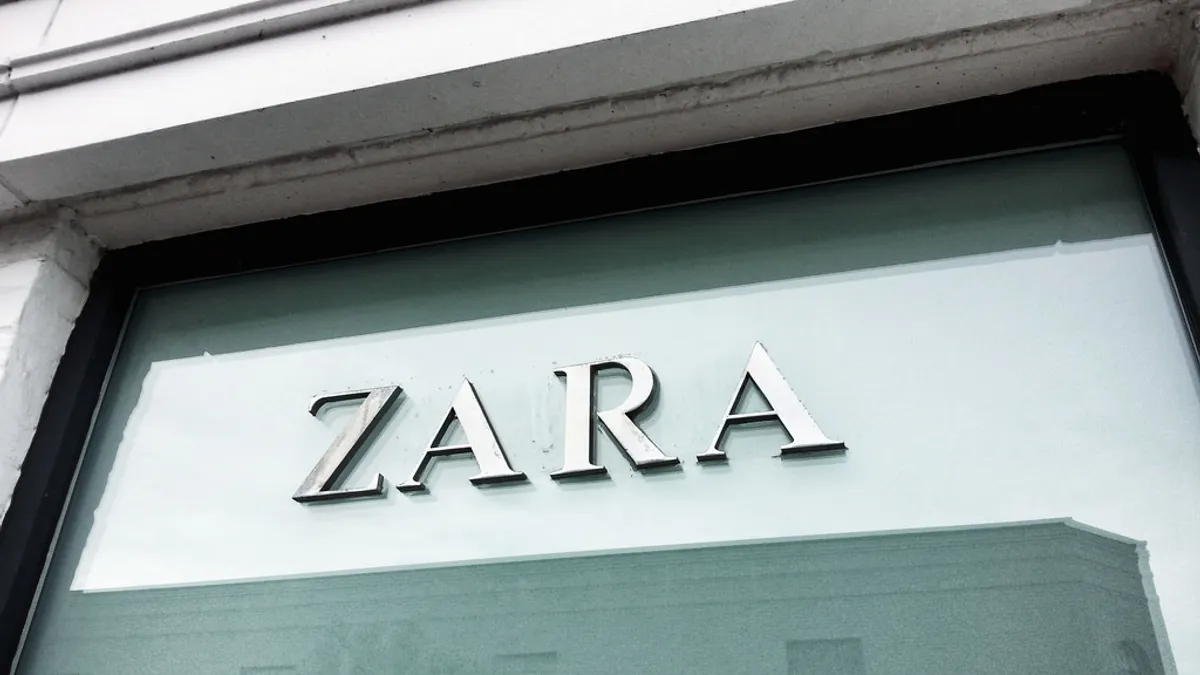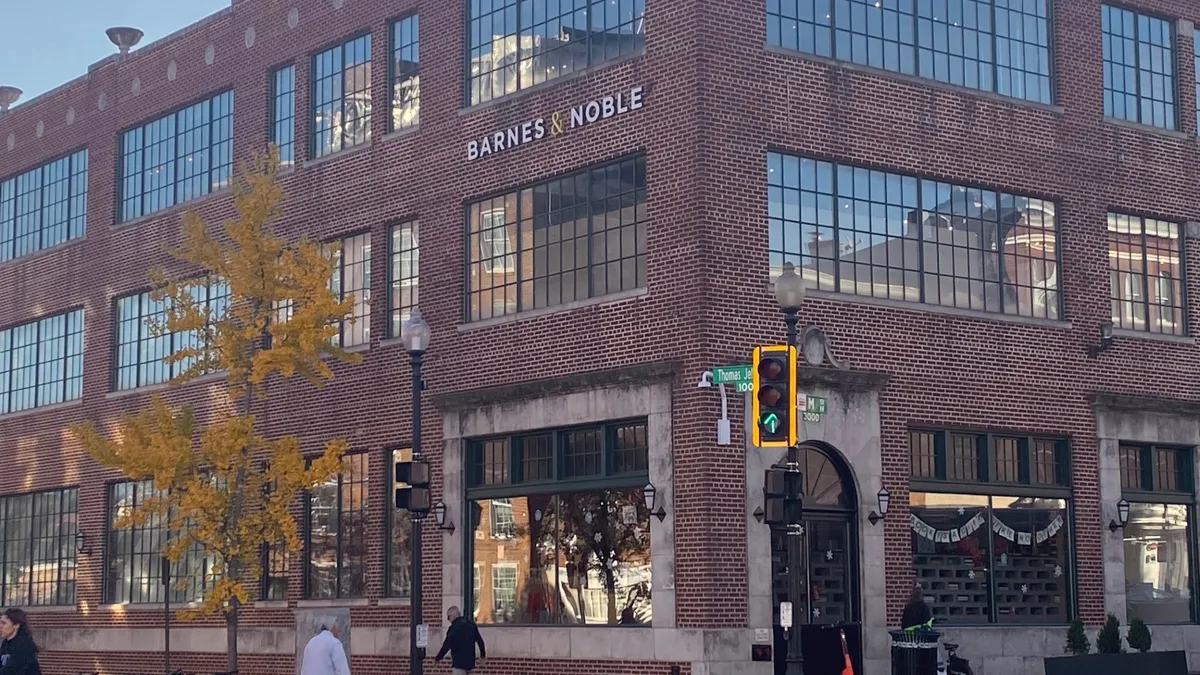Zara may be in the midst of changing the parameters of e-commerce returns for apparel retailers.
The company announced in May that U.K. customers will now be charged 1.95 pounds, or about $2.45, for customers to return online purchases to third-party drop-off points. Customers are still able to return online purchases at any Zara store in the U.K. free of charge.
The returns system is already in place for Zara in other European markets, including Belgium and the Netherlands, but most e-commerce shoppers opt to complete their returns in stores. It's unclear if the charge is going to come to the U.S., as the decision is made on a market-by-market basis.
Charging a fee for returns is not new and is seen sometimes with products like electronics, according to Mehmet Altug, associate professor of operations management at the School of Business at George Mason University. “From a return volume perspective it’s a good thing. But, on the other hand, from a profitability perspective, it has implications. One has to be careful with the price, the demand competition … From a profitability perspective if you're the only retailer doing that in your sector, in your industry, then you might start to face some demand issues. Customers may start to go to another retailer.”
As retailers navigate high return rates and thinner margins due to supply chain pressures, will it become the norm to charge for returns?
The state of returns
E-commerce in the U.S. grew 30% in 2020, which is the fastest growth rate since 2002, according to Forrester. During that time, clothing, accessories and footwear as a group accounted for 19% of all U.S. e-commerce sales growth. Forrester projects that digital sales in the clothing category will reach 47.5% by 2024.
However, retailers have a problem when it comes to e-commerce, specifically when it comes to apparel and footwear, and that is returns. Last year, shoppers were expected to return over $761 billion in merchandise, with about $218 billion coming from online purchases, according to the National Retail Federation. The category with one of the highest return rates? Clothing.
And while retail’s response to returns historically has been to make it as easy as possible for shoppers, that may be changing. Especially as companies are currently taking a hit on margins due to increased fuel, materials and other supply chain costs.
Over the years, an increase in speedy e-commerce paired with generous return policies and inconsistency in apparel sizing has all led customers to bracket their orders. Bracketing involves customers buying multiple sizes, colors or styles of an item, knowing they will return some of what was purchased. Many people do it to navigate complicated or erratic sizing issues with clothing. However, shoppers also use it as a way to simply try on clothing.
"I applaud them. Somebody had to do this.”

Tony Sciarrotta
Executive Director, The Reverse Logistics Association
“The bedroom is now our dressing room, or the living room is now our dressing room for products we buy, clothing especially,” Tony Sciarrotta, executive director of The Reverse Logistics Association, said in an interview. “Zara recognizes that the costs have gotten enormous. If you’re shipping three garments for a person, and they’re only expecting to buy one, that’s a 66% return rate. So that’s the nightmare of the apparel industry. And I applaud them. Somebody had to do this.”
Zara taking on the issue of returns may be an important test case for retail, simply due to its scale. Zara and Zara Home combined have nearly 2,500 stores and brought in nearly $21 billion in net sales in 2021, according to the company's latest annual report. The retailer recognizes itself as one of the biggest international fashion companies, with parent company Inditex acting as one of the world’s largest distribution groups.
But, just like Best Buy put limits on returns many years ago, Sciarrotta said that Zara may become stronger because it has put policies in place regarding returns. "It's a goal to be a leader. It's a goal to be growing your business. But, you can't be growing your business as most e-commerce companies did without looking at the end-to-end cost of your business," he said.
Returns as a marketing opportunity
Free returns have been part of expectations regarding e-commerce shopping for years.
“My feeling is consumers feel returns are table stakes,” said Bill Catania, founder and CEO of OneRail. Ordering multiples is how people shop, he said. “That’s how we’ve been conditioned. Because Amazon notably — and some others — have removed so much friction from that process.”
Deciding on return policies can be part of a larger discussion on how retailers decide to market to a shopper. With Zara offering free in-store returns, the company has an opportunity to get shoppers to have a physical retail experience in addition to their digital encounter with the brand. That is a potential setup for another purchasing opportunity, and a circumstance for the shopper to have a deeper connection with the company, according to Altug.
Instead of seeing a return as a penalty, companies can encourage different behavior from customers, like giving a small discount if someone opts out of a return, Altug said. “There’s a positive perception, because then you’re being rewarded,” he said. “There’s a bit of a psychology component here.”
And while Zara's new U.K. return policy may push people to complete returns in stores, a number of shoppers are sharing their experiences on social media. Namely, that they are encountering long return lines.
Is there ever a time when your returns queue does not look like this!? It’s ridiculous, particularly when your other counters are empty @ZARA_Care pic.twitter.com/0E3hF7YOjo
— Georgia (@glstweets_) June 5, 2022
45 mins in zara returns. Remind me to never agree to this again
— MG (@garno38) June 3, 2022
Although some people have the ability to decide whether they want to complete transactions in stores or online, some customers are noting that extended sizes are only available digitally. That means customers who shop for larger sizes have to make decisions about returns only based on e-commerce and may have to take the hit on the return fee if they don't live near a store.
Zara is going to start charging for returns, but anyone over a size L (which is around a size 14) can only shop online because they barely cater for these sizes in store. So this, to me, is a fat tax.
— Kelli Jaine Blanchett (@KelliJBlanchett) June 2, 2022
Creative solutions and the future of returns
While e-commerce returns are free at Zara stores, shoppers will be charged a fee for items that are returned at third-party drop-off points. The policy was brought about for sustainability reasons, with the understanding that it is better for products to be returned to stores than for delivery drivers to pick up small quantities from regional drop-off points.
Those third-party drop-off locations are throughout the U.K. and include places like convenience stores and newsagents that accept parcels on behalf of retailers.
Third-party companies may provide many solutions regarding the future of e-commerce, according to OneRail's Catania. Large companies have dense networks. That means if many deliveries are happening, companies can potentially do returns through product pickups at people’s homes because they have the density and scale to do so. However, smaller retailers may be at a disadvantage because costs for pickup would be too high.
That brings in the potential for companies to get creative around deliveries and returns, according to Catania, where retailers can form coalitions in order to crowdsource delivery and returns. “The concept of crowdsourcing will allow you to achieve that density and scale a lot faster. Just imagine if there were four or five e-tailers, not just bricks and mortar, strictly e-commerce companies that could pool their return demand together.”
Amazon has done it with Kohl’s, with Catania referring to it as “coopetition,” a concept where retailers can be both competitors but serve as partners through a combined returns program.
A number of business models could emerge that are strictly focused on returns, such as an aggregate return model that is across retailers that is based on a subscription. “You have to start getting creative,” Catania said.





















